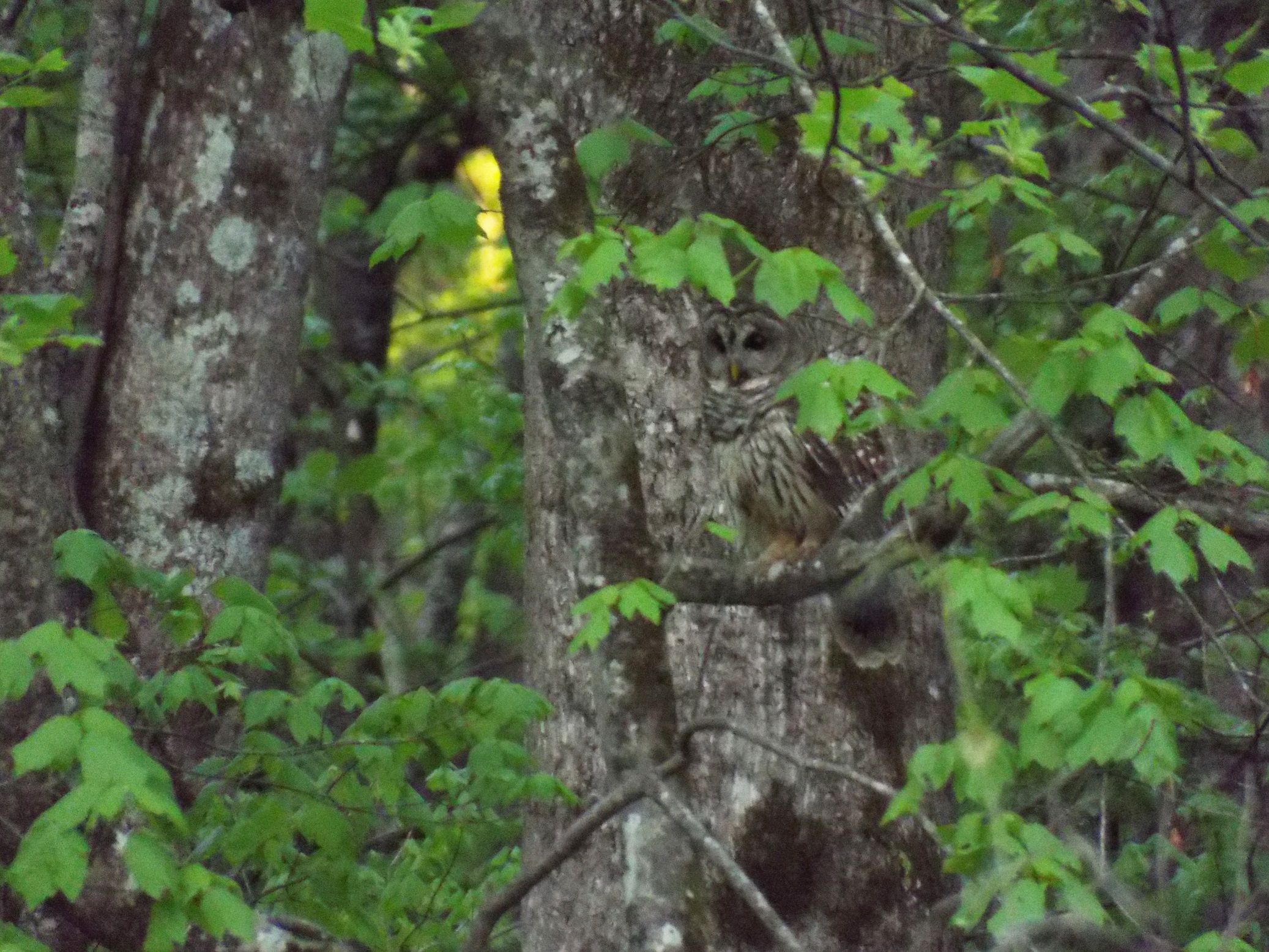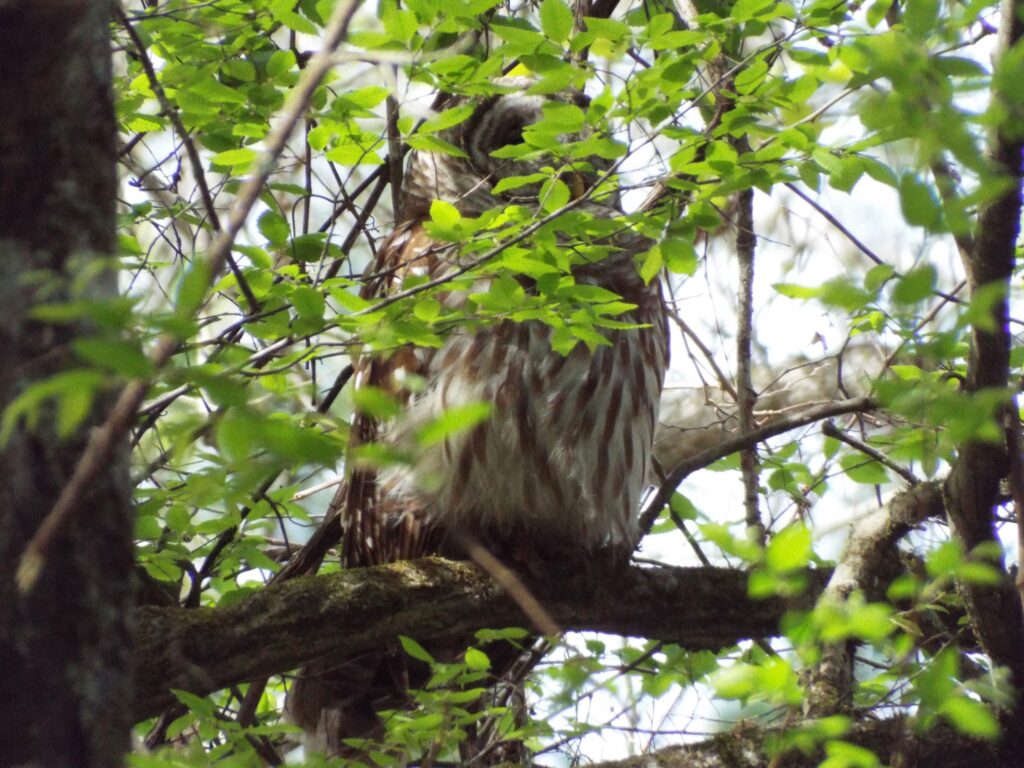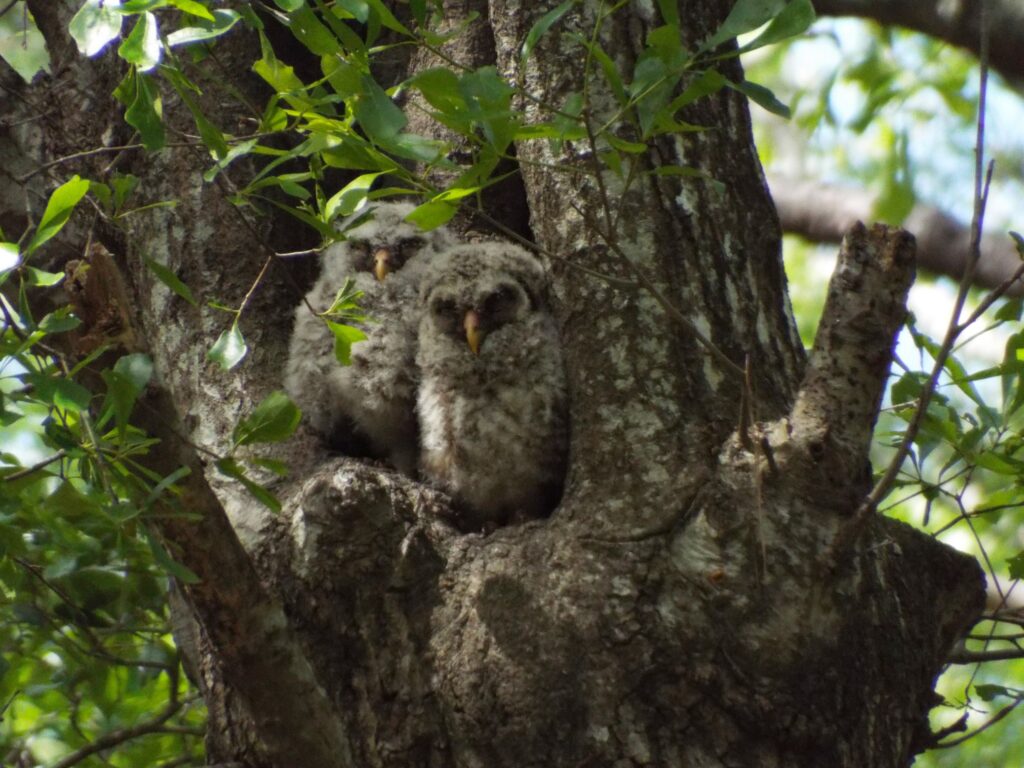


This week for Flora and Fauna Friday it’s the streaky sneaky inquisitive wide-eyed owl of copse and glade, the Barred Owl (Strix varia).
Barred Owls are one of our four resident species of Owl. We have another four vagrant species who drop into the state every now and again but let’s ignore them. Barred Owls are our second largest and most numerous species of Owl here in the Lowcountry. They are common throughout forest habitats, particularly bottomlands. They perch in trees where they scan the shadows of the dimly lit dusk for scurrying mammals and creeping amphibians. Swiveling their head to hear for the jostling of leaves and pitter-pattering of little feet.
A Barred Owl’s plumage is barred below and banded behind in ashen-gray and chocolate-browns. Their eyes are an empty black glass, large and set deeply into a flat, pale gray face. Their thin bone-yellow beak is buried below a bushy moustache that blends smoothly into their strong nasal bridge. About their face rings two arches of brown that run from their jowls around to their forehead. One of these “eyebrows” always sits slightly higher than the other, giving Barred Owls a wide-eyed and skeptical expression.
That asymmetrical forehead is a deliberate adaptation. Just like our ears, the feathers of an Owl’s face are concave to focus sound towards the center. Many species of owls have asymmetrical ears. The Barred Owl is one such species, although its asymmetry is certainly not as pronounced as others. This cock-eyed cranium allows Owls to better pinpoint the elevation of prey. An adaptation like this is advantageous because Barred Owls rely on their amazing sense of hearing to hunt. Those ears, in combination with their sharp eyesight and the unmatched night-vision of an owl, lets them nimbly meander between trees through the forest understory during the dead of night to drop like a brick onto a shrew shivering 20 feet below under the leaf litter.
Owls, like many raptors, are prone to tunnel vision. A state of hyper-focus that many predators enter when pursuing prey, losing their situational awareness in the process. This is a double-edged sword in the modern world as young Barred Owls are at risk to become roadkill. Barred Owls like to hunt along roadsides, perching on limbs and power lines to spot prey crossing over causeways and roadways. If an Owl spots a mouse in the headlights of an approaching car, it won’t hesitate to dive onto the blacktop, putting itself directly in harm’s way without a chance to react. Red-shouldered Hawks encounter the same problem in the daytime. It’s a sadly ironic fate for birds as keenly perceptive as Barred Owls.